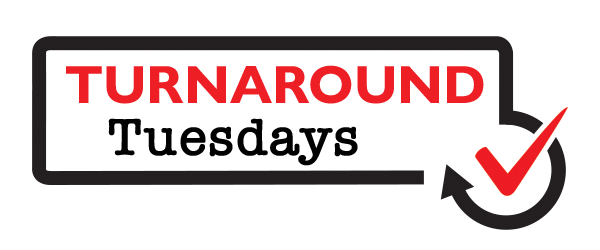[Editor’s note: Welcome to our newest feature, Turnaround Tuesdays. Each week, we will share a story about how a district used technology in schools to improve something. Come back each week for insight on transforming everything from reading scores to wireless network performance.]
Demographics:
Rowan-Salisbury (NC) School System [1] serves 18,382 students across 35 schools.
Biggest challenge:
Our school district was considered a low-performing district by the state of North Carolina. Low-performing is given to a district when more than half of the schools are falling in the ‘D’ or ‘F’ range on an A-F scale. The classrooms within each school were driven by a traditional approach to education, leaving little room for innovation and the implementation of best practices. Literacy levels in particular were struggling, with low Lexile reading levels across grades and a lack of access to reading materials and devices for students.
Solution:
I came to Rowan-Salisbury with the goal of serving and supporting the district in an effort to erase the low-performing label and to help the district thrive. The first step in increasing student performance and satisfaction was to overhaul our district literacy program.
Our district implemented a robust strategy that included personalized literacy instruction as a core element. We chose Achieve3000 [2] to partner with us around facilitating that strategy because of their focus on personalized learning at an accelerated pace. The platform helps students to achieve literacy goals through a unique method that tailors instruction to each child’s individual Lexile reading level.
We implemented the platform at every grade level, giving teachers access to a pool of resources and activities that assist with literacy learning across all subject areas and students’ interests. We encouraged students to work through these activities both during the school day and at home as a supplemental resource.
After implementation, we saw immediate gains in students who completed just two Achieve3000 activities per week and, within the first year, 30 percent of students were exceeding expected growth in reading. In addition, we’ve seen students more invested in completing activities outside of school, with 69 percent of students logging in to complete activities on weekends, after school and during breaks.
Lessons learned:
- A solid implementation plan is key to putting a new initiative in place.
- Teacher understanding and support was crucial to our success.
- When students have the correct resources, they can make impressive gains.
- For our district, it was necessary to find a district-wide solution to our problem, which meant that a flexible and customizable tool was needed.
Next steps:
- Continuing to integrate literacy throughout all curriculum.
- Due to the passing of a recent bill, our district qualifies as a renewal district, allowing for more flexibility with curriculum, budgeting, and staffing. We plan to use this opportunity to continue our journey of becoming an innovative school district.
Next week:
Come back and see how a district turned around its wireless network performance.
